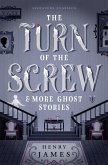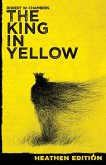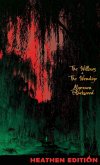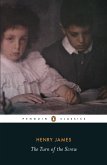Henry James (1843-1916) was a celebrated American author, who became a British subject in the last year of his life, and is considered by many to be among the greatest novelists in the English language having been thrice nominated for the Nobel Prize in Literature. His novella The Turn of the Screw has garnered a reputation as the most analyzed and ambiguous ghost story in the English language and remains his most widely adapted work in other media. The story centers on a young governess sent to a remote estate to care for two orphans, but quickly becomes convinced that the grounds are haunted and its specters are stalking the children - but are they? And are they even real? And are the children aware? Questions author Gillian Flynn sums perfectly with her observation, "The Turn of the Screw is one of the most chilling ghost stories ever, largely because it is so deliciously elusive."
Hinweis: Dieser Artikel kann nur an eine deutsche Lieferadresse ausgeliefert werden.
Hinweis: Dieser Artikel kann nur an eine deutsche Lieferadresse ausgeliefert werden.








